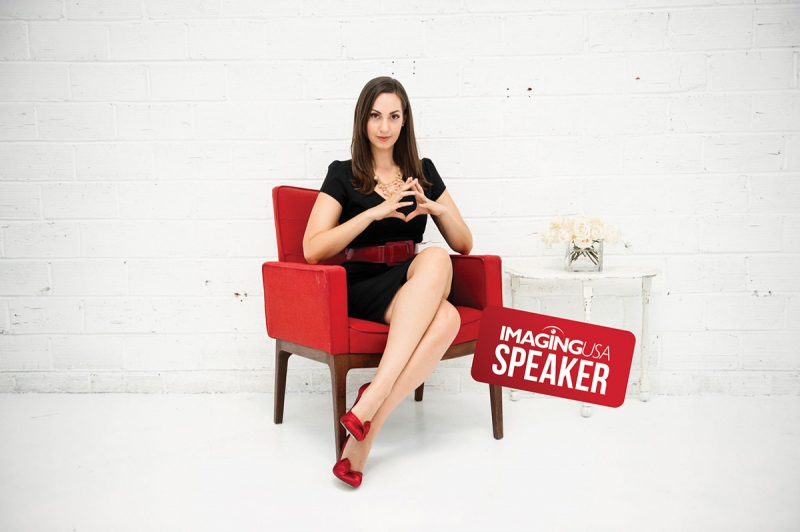How to make a powerful impression
Behavioral expert Vanessa Van Edwards gives tips on making a good impression on photography clients
• November 2019 issue
Make an impact © Maggie Kirkland
© Maggie Kirkland
Behavioral expert Vanessa Van Edwards will deliver the closing keynote address at Imaging USA 2020.

Behavioral expert Vanessa Van Edwards will deliver the closing keynote address at Imaging USA 2020.
Do you make a trustworthy first impression? Do your clients know you have their back? Do they love working with you so much they can’t wait to book you again? Vanessa Van Edwards is an expert in human behavior with a blockbuster TED talk to her credit. She’s developed science-based tactics to help people improve their interpersonal communication skills, which is what client interaction is all about for entrepreneurs.
Van Edwards will deliver the closing keynote address at Imaging USA 2020 in January. In the meantime, we asked her to share some best practices for wooing a client over and over again along the customer service journey.
First five minutes
Whether it’s an in-person consultation, a random introduction at an event, or the first five minutes you’re face to face with a paying client, the main thing to establish during those initial fleeting moments is trust. And trust is best gained through open body language.
Are you loaded down with camera gear or a laptop bag when you arrive to your meeting? “We have to be really careful of that. You can close yourself off,” says Van Edwards. If your hands are full, quickly put down the gear, open your stance, and approach your client with a handshake. So you are literally reaching out, she says. “All those things they say about hands are true,” says Van Edwards. People instinctively distrust a stranger who hides their hands—crossing them, putting them in their pockets, clenching them behind their backs—she says. So outstretching your hand as soon as you make eye contact with the person is extremely important in establishing trust.
First five hours
After you’ve passed that five-minute mark, it’s time to convince your client they’d like to spend five hours with you. They’re now assessing whether you’re on their side, whether you’ll fight for their goals and needs, says Van Edwards.
This is when word mirroring is most effective. As much as it makes sense, use the same words your client is using. Let’s say your prospective wedding client says, “I’m so excited about my wedding. It’s a really special day, but I’m just really worried that we won’t get all the photos we need.” Do not respond back by talking about how beautiful your photography is, as that’s clearly not top of mind for the client. The significant words she’s used are “special,” “worried,” and “need.” So mirror those words in your response while addressing her concerns: Say, “Don’t worry. This is your special day. We will capture all the photos you need of you and your family. We’ll take your worries away from you and worry about them for you.”
First five days
Once a client has agreed to work with you, it’s time to ensure their experience is so wonderful they’re basking in the glow of it for days and are inspired to book you again as well as sing your praises to friends. “This is the hardest part,” Van Edwards says. “Most people don’t make it past the first two levels.” The best way to reach this level of client satisfaction is to become adept at predicting clients’ needs, especially the ones they are reluctant to voice. That can be as simple as saying, “Hey, I noticed you have been in those high heels for a long time. Can we do a couple of seated photos and then we can come back to the standing photos?”
Needs are often easy to anticipate, Van Edwards notes. It’s just a matter of thinking about the timing and context of your sessions as well as the potential benefit of breaks or emotional recharges. And it’s well worth the effort. “When someone predicts a need before it’s said out loud, it feels like the greatest human experience.”
Amanda Arnold is associate editor of Professional Photographer.


 View Gallery
View Gallery